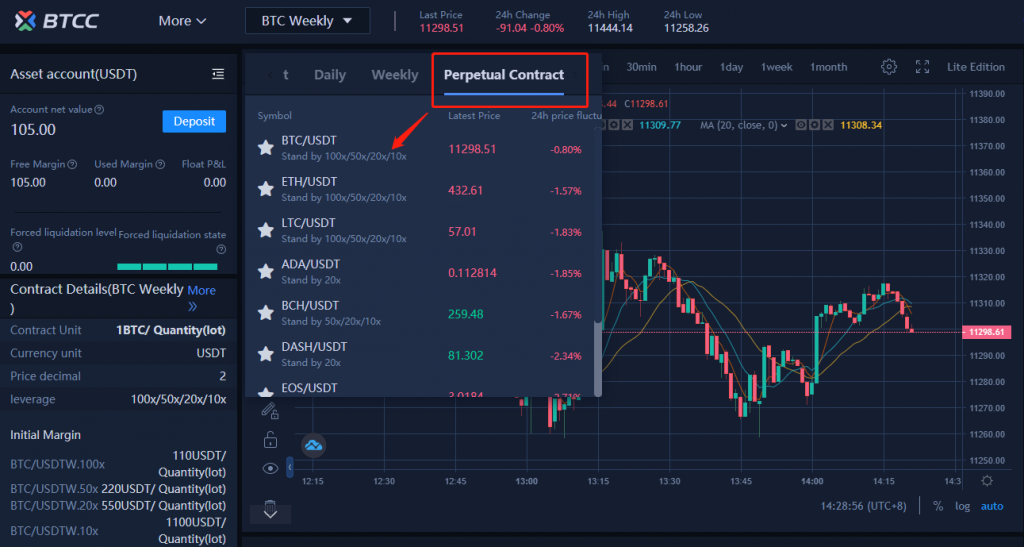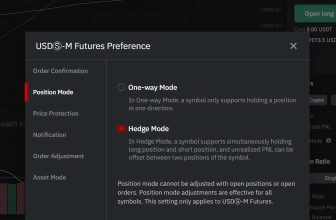In the world of finance and trading, the terms futures, perpetual contracts, and derivatives are commonly used. These financial instruments are used to hedge against risk or speculate on various asset price movements. However, despite sharing certain similarities, there are significant differences between these three instruments.
This article will explore the key differences and similarities between futures, perpetual contracts, and derivatives and why exchanges use different names for these instruments.
What are Futures?
Definition and Characteristics
Futures are standardized contracts that obligate the buyer to purchase an underlying asset at a predetermined price and time in the future. The seller of the contract is obliged to deliver the asset to the buyer on the agreed-upon date. Futures are traded on exchanges and are typically used by investors to hedge against price volatility or to speculate on the future price movements of various assets.
Advantages and Disadvantages
One of the main advantages of futures is that they are standardized contracts, which means that the terms and conditions of the contract are the same for all buyers and sellers. This makes it easy for investors to quickly trade in and out of positions. Futures also offer leverage, which means that investors can control a large amount of the underlying asset with a small amount of capital.
However, futures also have their disadvantages. They require a significant amount of capital to trade and are subject to margin calls, which can result in losses for investors. Additionally, futures have an expiration date, which means that investors must be correct in their market predictions within a specific timeframe.

What are Perpetual Contracts?
Definition and Characteristics
Perpetual contracts are a type of futures contract with no expiration date. Instead, they are designed to trade at the underlying spot price with funding rates that occur every few hours. Perpetual contracts are often used in cryptocurrency trading but can also be used to trade other assets.
Advantages and Disadvantages
One of the main advantages of perpetual contracts is that they do not have an expiration date, which means that investors can hold positions for as long as they want. Perpetual contracts also offer leverage, which means that investors can control a large amount of the underlying asset with a small amount of capital.
However, perpetual contracts also have their disadvantages. They require a significant amount of capital to trade and are subject to margin calls, which can result in losses for investors. Additionally, the funding rates associated with perpetual contracts can be unpredictable, which can result in unexpected losses for investors.
What are Derivatives?
Definition and Characteristics
Derivatives are financial instruments that derive their value from an underlying asset, such as stocks, bonds, commodities, or currencies. Derivatives can be used to hedge against risk or speculate on the underlying asset’s future price movements. Some examples of derivatives include options, swaps, and futures.
Advantages and Disadvantages and Disadvantages
One of the main advantages of derivatives is that they allow investors to gain exposure to an underlying asset without actually owning it. This can be useful for investors who want to hedge their portfolios against market volatility or speculate on the future price movements of various assets. Derivatives also offer leverage, which means that investors can control a large amount of the underlying asset with a small amount of capital.
However, derivatives also have their disadvantages. They are complex financial instruments that require significant knowledge and expertise to trade. Additionally, derivatives can be subject to counterparty risk, which is the risk that the other party involved in the transaction will default on their obligations.
Differences between Futures, Perpetual Contracts, and Derivatives
While futures, perpetual contracts, and derivatives share certain similarities, there are significant differences between these three financial instruments. Here are some of the key differences:
Settlement
Futures and perpetual contracts have a settlement date, which is the date on which the buyer and seller must exchange the underlying asset and payment. On the other hand, derivatives do not have a settlement date, as their value is derived from the underlying asset.
Expiration
Futures and perpetual contracts have an expiration date, which is the date on which the contract is no longer valid. Derivatives do not have an expiration date, as their value is derived from the underlying asset.
Funding
Perpetual contracts require funding to be paid periodically to maintain the price of the contract in line with the underlying asset. Futures and derivatives do not require funding.
Price Tracking
Perpetual contracts track the underlying asset’s price in real-time, whereas futures and derivatives are priced based on the settlement price at a specific point in time.
Similarities between Futures, Perpetual Contracts, and Derivatives
While futures, perpetual contracts, and derivatives have significant differences, they also share certain similarities. Here are some of the key similarities:
Leverage
Futures, perpetual contracts, and derivatives all offer leverage, which means that investors can control a large amount of the underlying asset with a small amount of capital.
Margins
Futures, perpetual contracts, and derivatives all require investors to put up an initial margin to enter into a position. This margin acts as collateral to cover any potential losses that may occur.
Risk Management
Futures, perpetual contracts, and derivatives can all be used for risk management purposes. Investors can use these financial instruments to hedge against market volatility or to protect their portfolios against potential losses.
Why do Exchanges use Different Names for These Instruments?
Exchanges use different names for futures, perpetual contracts, and derivatives to differentiate between the various financial instruments and to make it easier for investors to understand what they are trading. For example, cryptocurrency trading companies may use the term perpetual contracts instead of futures, which is a more commonly used term in the cryptocurrency industry.
Additionally, exchanges may use different names for these instruments to distinguish between different types of contracts. For example, some exchanges may offer futures contracts that settle in cash, while others may offer physically settled futures contracts.
Conclusion
FAQs
What is the main difference between futures and perpetual contracts?
The main difference between futures and perpetual contracts is that futures have an expiration date, while perpetual contracts do not.
What is the advantage of using derivatives?
One of the main advantages of using derivatives is that they allow investors to gain exposure to an underlying asset without actually owning it.
What is the disadvantage of using perpetual contracts?
One of the disadvantages of using perpetual contracts is that they require funding to be paid periodically to maintain the price of the contract in line with the underlying asset.
How are margins used in futures, perpetual contracts, and derivatives?
Margins are used in futures, perpetual contracts, and derivatives to cover any potential losses that may occur when trading these financial instruments.
Why do exchanges use different names for these instruments?
Exchanges use different names for these instruments to differentiate between the various financial instruments and to make it easier for investors to understand what they are trading. They may also use different names to distinguish between different types of contracts.






